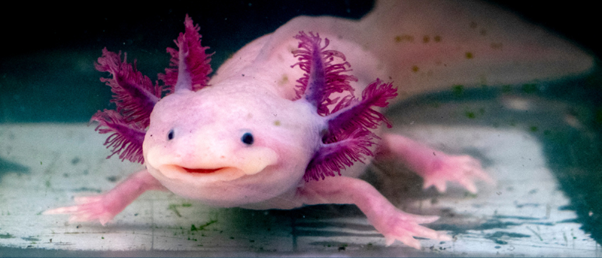
BioTechniques News
Annie Coulson

Researchers have discovered that a newly emerged animal model could hold the key to reversing muscle aging.
An international collaboration, led by researchers at Monash University (Melbourne, Australia), has utilized African killifish to better understand how muscles waste away with age. They found that muscles revert to an early-life state towards the end of life. This could help develop treatments for muscle wastage in elderly people, potentially improving their quality of life.
As we age, our muscles start to waste away in a process called sarcopenia, which can contribute to falls, frailty and functional decline in elderly people. With increasingly aging populations, sarcopenia places a burden on healthcare systems. A better understanding of the mechanisms that drive sarcopenia may help develop medical interventions to slow or prevent it, which could help improve quality of life for elderly people and ease the pressure on healthcare systems.
To investigate sarcopenia, the research team turned to a newly emerged animal model – the African turquoise killifish. Killifish are increasingly being used in studies of aging, as they have the shortest known lifespan of any vertebrate species bred in captivity and share many symptoms of aging with humans.
As this was the first study using killifish to study sarcopenia, the team started by performing a thorough cellular and molecular characterization of skeletal muscle from early life, aged and extremely old late-life stages. They found that many of the characteristics they assessed, such as muscle stem-cell number and muscle innervation, deteriorated with age, which is consistent with sarcopenia. However, they also found that muscle fiber size and proteolysis deteriorated in aged fish but actually improved in extremely old fish.
 Senescent cells enhance limb regeneration
Senescent cells enhance limb regeneration
Researchers find that senescent cells promote the dedifferentiation of muscle tissue and enhance limb regeneration in salamanders, challenging our understanding of cellular senescence.
“Importantly, the late-life stage during which we observed improved muscle health perfectly coincides with a stage when mortality rates decline. We, therefore, postulate that the improvement in muscle health may be a critical factor contributing to the extension of life span in extremely old individuals,” commented first author Avnika Ruparelia (University of Melbourne; Australia).
To identify mechanisms that could help explain the extended lifespans of extremely old fish, the team looked at metabolism, which has previously been found to be associated with longevity. They used a system metabolomics approach and discovered that some features of metabolism in the extremely old fish were rejuvenated to resemble those of young fish. A possible explanation for this is that during aging there is a depletion of lipids, which are important energy reserves.
“We believe that this mimics a state of calorie restriction, a process known to extend life span in other organisms, which results in activation of downstream mechanisms ultimately enabling the animal to maintain nutrient balance and live longer. A similar process is seen in the muscle of highly trained athletes,” explained senior author Peter Currie (Monash University).
Using drugs that regulate the formation of certain lipids, the team achieved a similar rejuvenation of aging muscle.
“The idea that muscle aging may be reversible, and potentially treatable by drugs that can manipulate a cell’s metabolism, is an exciting prospect especially given the social, economic and healthcare costs associated with the ever-growing aged population around the world,” concluded Ruparelia.
The post Could African killifish hold the key to reversing muscle aging? appeared first on BioTechniques.
Full BioTechniques Article here
Powered by WPeMatico
